Back in 1960, a young New York couple bought a small Jacob Lawrence painting at a charity art auction. Apparently unbeknownst to them, it was No. 16 of 30 paintings (or panels) in his series “Struggle: From the History of the American People,” created from 1954 to1956.
All but five paintings in the series were on display recently at the Metropolitan Museum of Art in New York. No. 16 was one of those missing, represented by an empty frame on a wall. That changed when a visitor suspected that a Lawrence painting hanging in the living room of a friend’s home in New York might be part of the series. He told the friends who contacted the museum and learned that it was one of the missing paintings.
The painting, measuring 16″x12″, is now in the traveling exhibit “Jacob Lawrence: The American Struggle.” Organized by the Peabody Essex Museum in Salem, MA, it is headed to Birmingham, AL; Seattle, WA, and Washington, DC, through next year.
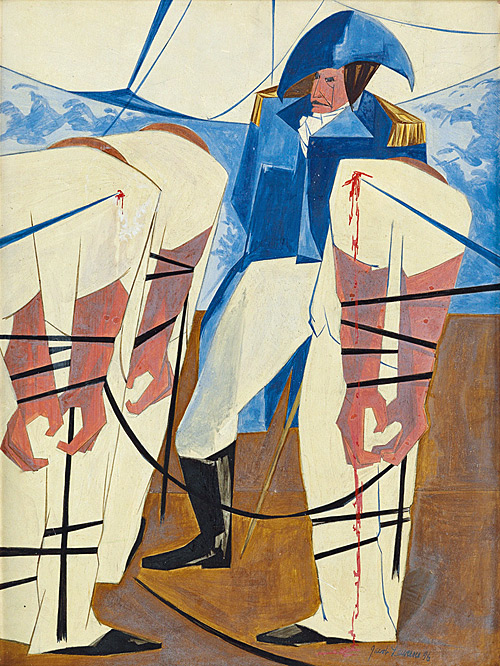
The series was originally purchased in the late 1950s as a group but was subsequently sold individually. Panel 19 was perhaps the most recently sold. Titled “Tension on the High Seas,” it sold for $413,000 at an auction I attended two years ago at Swann Auction Galleries in New York. Purchased by a private collector, it is part of the traveling exhibit. Four of the panels are still unaccounted for.
Lawrence titled No. 16 “There are combustibles in every State, which a spark might set fire to. —Washington, 26 December 1786.” It recounts the story of Shays’ Rebellion, an uprising of farmers led by Daniel Shays, a Revolutionary War veteran, against high taxes and corruption in the Massachusetts legislature. It spurred action to create a new form of government and a new constitution for the country.
Lawrence said that he created the 30-panel series to show “the struggles of a people to create a nation and their attempt to build a democracy.” He also included panels on African Americans, women and Native Americans to show their contributions to the founding of America and their own struggles for freedom.
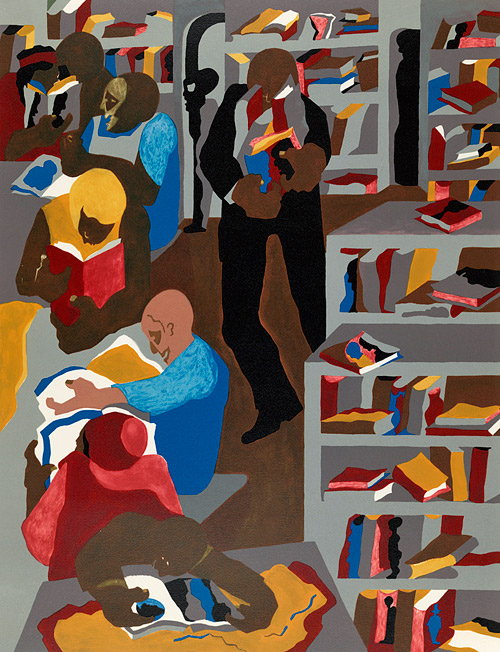
The purchase of such a significant painting by one of America’s foremost artists is what I had always hoped for. I wanted to find paintings by African American veteran artists in some mom-and-pop auction house. I never found a Jacob Lawrence, but I was able to buy several of his original prints – lithographs and serigraphs – at galleries and other retail spots. Bless him and other artists for creating prints for those of us who can’t afford their more expensive paintings.
Along with the prints, I’ve also picked up about a half-dozen books that used his works as illustrations.
Lawrence is among the best-known African American artists in the country. Many of his works are built around African American history. Among his most important is his “Migration of the Negro” – better known as the Migration Series. It is made up of 60 paintings depicting African Americans escaping from the brutal South to what they hoped was a more welcoming North. It was completed in 1941.
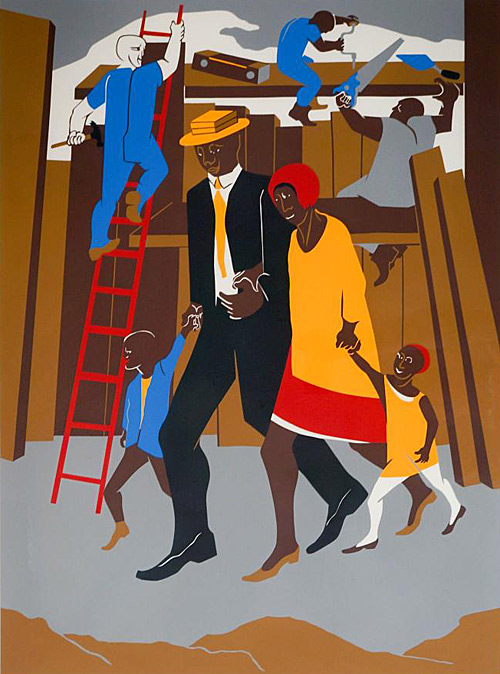
He produced several series, each consisting of 30 or more paintings – from Haiti’s Toussaint L’Ouverture to Harriet Tubman to the Book of Genesis to Frederick Douglass. During a bout with depression in 1949, he spent a year in the psychiatric ward of a hospital in Queens, NY, after which he painted “Hospital Series.” I viewed works from that period of his life during an exhibit at the Phillips Collection in Washington, DC, some years ago.
His works also show the everyday experiences of people in Harlem. The most favorite of my prints is a color serigraph that shows a well-dressed family of four making their way to an important event – perhaps to church. In the background, workers on ladders and scaffolding construct a building. Both groups represent the idea of building but in disparate ways. It is titled “The Builders (Family)” and dated 1974.
The print was a poster design for an exhibit at the Whitney Museum of American Art. Builders was a subject that Lawrence returned to quite often.
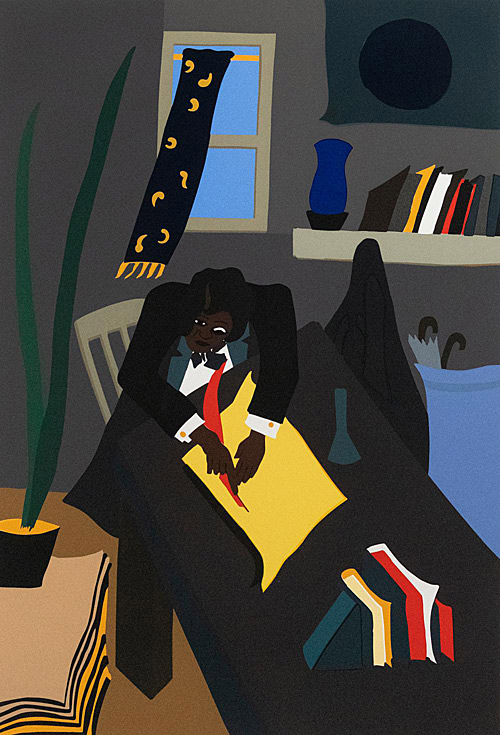
“I like the symbolism (of the builder) … I think of it as man’s aspiration, as a constructive tool – man building,” he once said.
I bought the print some years ago at a Seattle, WA, gallery that represented him. Lawrence and his artist-wife Gwendolyn Knight had moved to Seattle in 1971 when he became a professor at the University of Washington. He retired from there in 1986. Lawrence died in 2000.
I bought my first Lawrence serigraph at a friend’s art gallery and framing shop. I was excited to see it because I didn’t often see works by Lawrence and she rarely sold works by top veteran artists. She was selling it for one of her clients. It’s titled “Schomburg Library (1987).” Lawrence frequently visited that library as a youth and adult for reading and research.
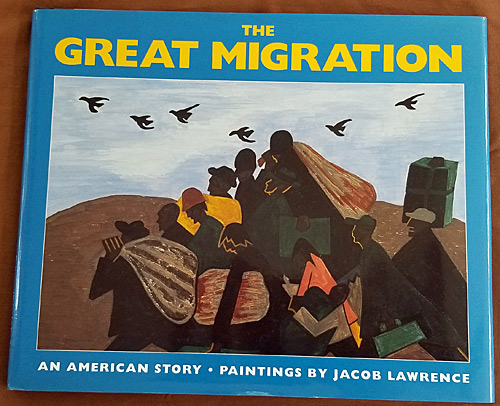
My other Lawrence serigraph is titled “Douglass” from 1999. I bought it at a National Association of Black Journalists convention in Seattle. Published by the organization, it was being sold as a fundraiser. The print was taken from the 32-panel series titled “The Life of Frederick Douglass,” created from 1938 to1939. The series was done in three phases, and this print is from Part II “The Fugitive,” panel No. 21.
As for the children’s books, I have several of those based mostly on his historical series. In 1968, Lawrence completed his first illustrated book, “Harriet and the Promised Land.” The books are a good way to acquaint kids with this great artist.
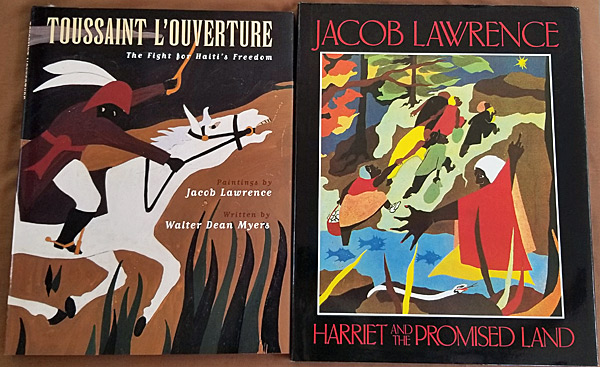
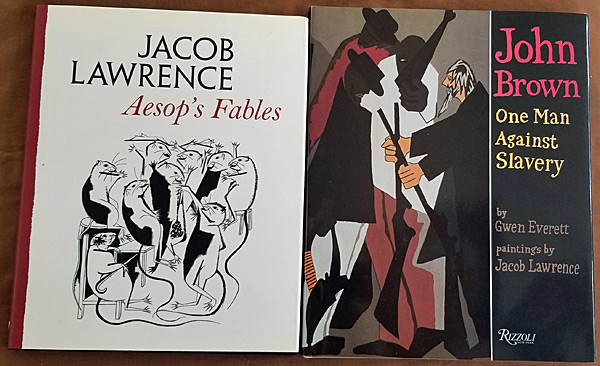

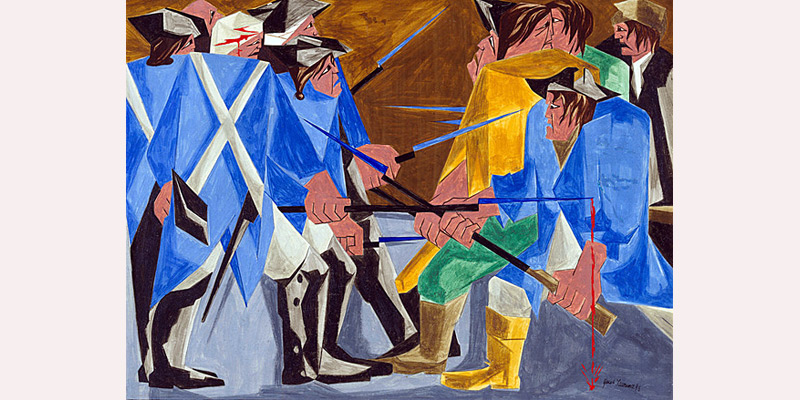
So interesting! I found your blog researching condensed milk holders, and ended up learning about Jacob Lawrence. Thank you!
My pleasure.